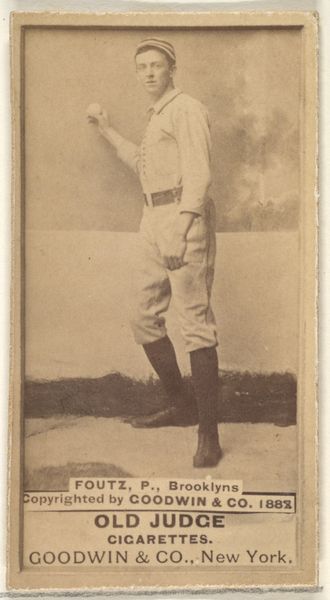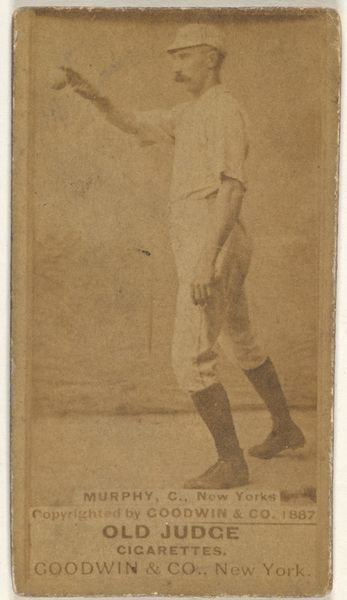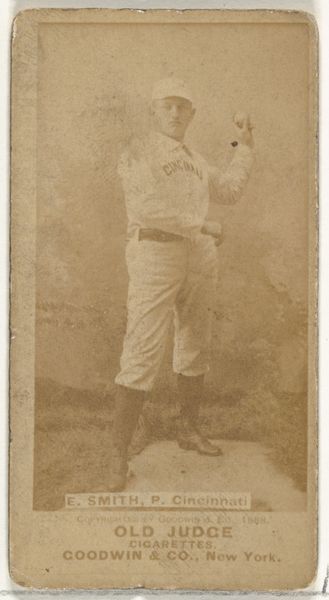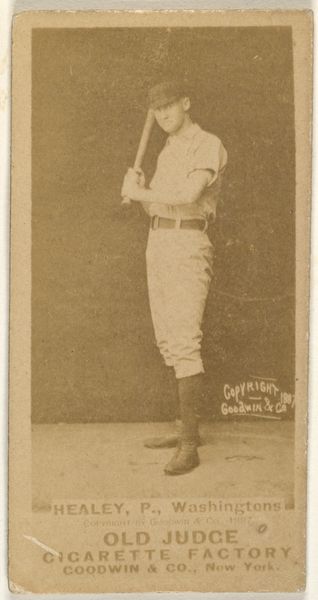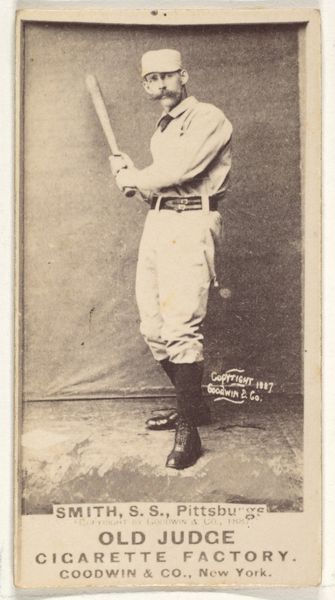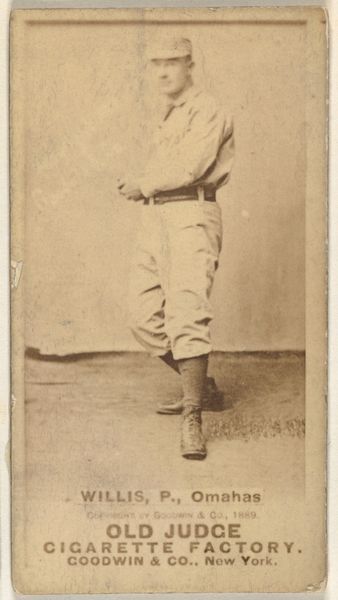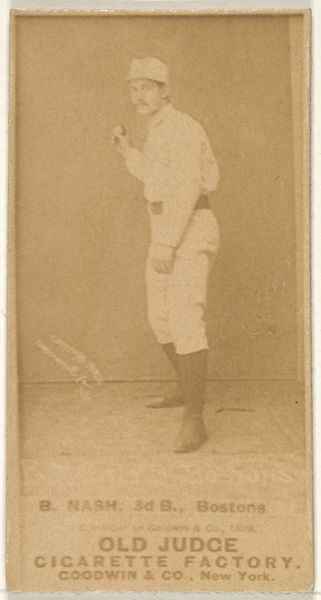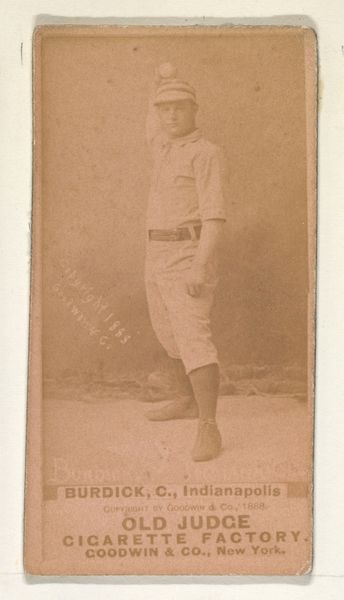
Clark Calvin "Old Fox" Griffith, Pitcher, Milwaukee, from the Old Judge series (N172) for Old Judge Cigarettes 1889
0:00
0:00
print, photography, albumen-print
#
portrait
# print
#
baseball
#
photography
#
pencil drawing
#
men
#
genre-painting
#
athlete
#
albumen-print
Dimensions: sheet: 2 11/16 x 1 3/8 in. (6.9 x 3.5 cm)
Copyright: Public Domain
Curator: I'm drawn in by the sepia tones, there is such stillness. It really speaks to a lost era of athleticism. Editor: Yes, let's unpack this print, made around 1889. The official title is quite descriptive: "Clark Calvin 'Old Fox' Griffith, Pitcher, Milwaukee, from the Old Judge series (N172) for Old Judge Cigarettes." Curator: Cigarettes, of course. Everything back then was tied to the growing manufacturing culture. Notice the "Old Judge Cigarette Factory" imprint – the commodification of sport is laid bare here. Who even was Goodwin & Company, the listed artist? Editor: Goodwin & Company mass-produced these albumen prints as trade cards. The photograph itself, and the paper it's printed on, becomes a vehicle for promoting Old Judge Cigarettes. I imagine thousands upon thousands of these were made, dispersed and casually consumed with a smoke. Curator: And consumed literally – eventually discarded. What survives carries so much symbolic weight. A pitcher in action; wind up, his gaze so steady, his focus absolute. And I love the old Milwaukee uniform, so clear it almost feels as though we are on the baseball field ourselves. Is he about to throw a fastball? Editor: Perhaps! It also functions as a symbolic embodiment of early American leisure, ambition, and physical prowess – a cultural icon distilled into a compact, portable image. His posture is everything, frozen mid-motion. A very controlled intensity is present and his glove is pristine – unlike those dirty baseballs of yesteryear! Curator: He’s the hero we want in our cigarette pack, a representative of strength. He becomes almost mythical! Even the "Old Fox" nickname hints at a kind of legendary status, right? Editor: Precisely! A player transformed into something far beyond just a ball player through strategic symbolism. Now seeing that he's not just promoting cigarettes but is actually more of a cultural emissary, I appreciate the artistry even more. Curator: A tangible relic of a very specific, commercialized, yet still romanticized moment. These kinds of pieces showcase baseball not just as a game, but an emerging cornerstone of popular culture. Editor: Right, this is an intriguing work, shedding light on the material culture of leisure in late 19th century America. It truly is worth examining for its material traces.
Comments
No comments
Be the first to comment and join the conversation on the ultimate creative platform.
